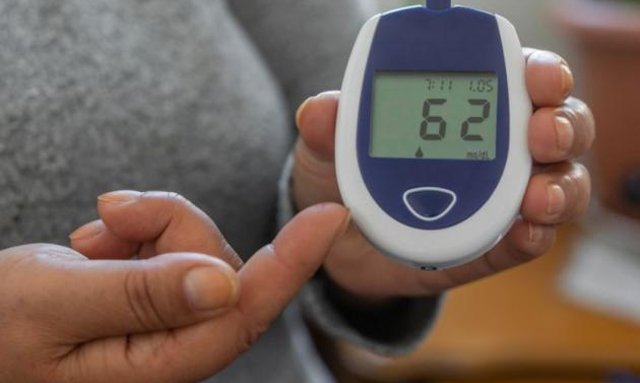GLP-1s and Other Incretins

Incretins are a medication class that can help people lower blood glucose, lose weight, and improve heart or kidney risk.
Incretin-based drugs, often referred to in short as incretins, are a type of medication that people with type 2 diabetes and/or obesity can use to lower blood sugar levels and lose weight. Their effectiveness has not only revolutionized diabetes care but has also led to certain diabetes products, like Ozempic and Mounjaro, becoming household names.
How do incretins work?
Incretin-based therapies work by copying (“mimicking”) the actions of natural incretin hormones, which help lower blood sugar after eating. For this reason, incretin-based drugs are sometimes called incretin mimetics. Incretin-based therapies act in the following ways:
- Stimulating insulin secretion, which then allows cells to take up glucose.
- Inhibiting glucagon secretion, which prevents more glucose from entering the bloodstream.
- Slowing gastric emptying, the process by which food from the stomach is emptied into the small intestine. This reduces appetite and increases feelings of satiety (fullness), which can cause people to eat less food and may help lead to powerful weight loss.
What are the different types of incretin-based therapies?
Incretin-based therapies can activate a single receptor or multiple receptors. GLP-1 receptor agonist drugs, which activate the GLP-1 receptor, have been on the market since 2005, so there are many different options available.
Recently, researchers have developed newer “multi agonist” drugs that use one molecule to activate multiple receptors. For instance, Mounjaro (tirzepatide) is a single molecule that stimulates both the GLP-1 and the GIP receptor and is thus called a “dual agonist.” Mounjaro is the only multi-agonist that is currently approved for type 2 diabetes. In the pipeline, retatrutide is a triple agonist that activates the GLP-1, GIP, and glucagon receptors.
So far, studies on these multi agonist drugs appear to suggest that activation of multiple receptors leads to greater weight loss than activating the GLP-1 receptor alone.
Who can benefit from incretin-based therapies?
Incretin-based drugs are most often used by people with type 2 diabetes and/or obesity to manage blood sugar levels and body weight. Incretin-based therapies can be taken alone, or with metformin or other diabetes medications.
Who should not take incretin-based therapies?
There have been very few studies conducted in type 1 diabetes. Consequently, incretin therapies are not approved by the FDA for people with type 1 diabetes. However, some healthcare professionals may prescribe these medications off-label to people with type 1 diabetes.
People with a history of pancreatitis or severe stomach or intestinal problems are advised not to take incretin-based therapies. These drugs are not recommended for people with severe renal impairment or end-stage renal disease. Some incretin-based therapies should not be used in people with a personal or family history of certain types of thyroid cancer – ask your healthcare provider if you fall into one of these groups.
What are the benefits?
- Incretin-based therapies are highly effective at lowering blood glucose and A1C levels. In fact, research on newer incretin-based therapies has shown that a significant proportion of people with diabetes were able to normalize their A1c levels. For instance, in the SURMOUNT-2 study of tirzepatide in people with type 2 diabetes and overweight/obesity, nearly half of participants reached an A1C of 5.7 percent or lower. Often, incretin-based therapies are given with other medications as part of a combination treatment.
- Incretin-based therapies can lead to significant weight loss. Some are sold as treatments for both diabetes and obesity. For example, Ozempic (diabetes drug) and Wegovy (obesity drug) both use a GLP-1 called semaglutide and differ only in dosage.
- Some incretin-based therapies have been shown to lower the risk of heart disease and kidney disease. Likewise, there are also benefits to cardiometabolic risk factors such as triglycerides, lipids, and blood pressure. GLP-1s have been especially effective at reducing the risk of stroke. Potential cognitive health benefits of these medicines are also being explored.
- Incretin therapies by themselves have a low risk of hypoglycemia. However, hypoglycemia can become a serious risk if incretin therapies are taken alongside other medications that lower blood glucose, such as sulfonylureas or insulin.
- Incretin-based therapies may also be beneficial for addiction and substance use disorders; research is ongoing.
What are the drawbacks?
- Most incretin therapies are taken by injection. The only exception is Rybelsus, an oral medication (pill), though other oral drugs are in development.
- Common side effects include nausea, vomiting, diarrhea, and constipation. These generally decrease over time.
- Other side effects may include dizziness, headaches, and mild tachycardia (increased heart rate). Less common side effects may include fatigue, vertigo, and hair loss.
- Incretins typically require uptitration, or a gradual increase in drug dosage over time. The titration process has been shown to reduce side effects.
- Incretins are more expensive than some other glucose-lowering medications, like sulfonylureas (SFUs), metformin, and TZDs. Patient assistance programs exist which can help people who meet eligibility criteria.
- Some drug makers announced supply shortages of Ozempic, Wegovy, and Mounjaro recently, though shortages are expected to resolve over time.
Commonly used incretin-based drugs
Below is a comprehensive list of currently approved incretin-based therapies.

What’s in development?
See below for a complete summary of incretin-based therapies in development.

Comparison of incretin therapies
Dulaglutide
GLP-1







